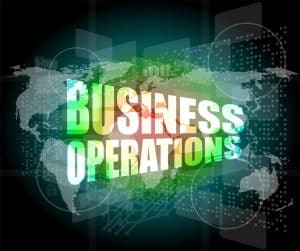
The goal of using artificial intelligence in operations is to free IT teams up, to be bolder with their technology initiatives.
AIOps – artificial intelligence for IT operations – is helping to pave the way to autonomous operations of critical enterprise systems. However, as it is AI, it depends on reliable data, setting up the next challenge on the path to lights-out IT.
That’s the gist of my keynote at the recent Robotic Data Automation Fabric and AIOps Conference, which explored the issues, opportunities, and required technology to achieve an autonomous enterprise. The question explored has the autonomous enterprise finally arrived? To reach this goal, AI needs to be supercharged with intelligent data supply chains to ensure that AIOps is delivering accurate and sustainable results. This calls for a rethinking of data architecture, one that is well connected to the pressing needs of businesses and IT operations.
For starters, IT teams are under considerable pressure, with management demanding that they build an autonomous enterprise – immediately. The bottom line is everyone wants to become digital, and they all depend on IT to deliver on this vision. At the same time, IT is expected to keep the lights on. If part of the infrastructure goes down, for whatever reason, it’s expected that customers will still be able to keep purchasing. That employees will be able to keep entering or refining customer information. That executives will be able to keep pulling reports.
See also: The Role of AIOps in Continuous Availability
In addition, there are other missions: deliver on the Internet of Things, which is contributing to the shift in business models away from manufacturing toward the constant monitoring and predictive servicing of smart products. Along those lines, there is a merging of operational technology, OT, data from machines and production systems into intelligent networks to increase capabilities and quality.
AI can provide a solution for overwhelmed IT shops with operational data through AIOps, which may be just what the doctor ordered to solve that. Applying AI to mundane IT functions will free up IT departments to concentrate on the bigger and more meaningful things, such as digital transformation and innovation, where competitors are catching up.
It needs to also be noted that AIOps, unlike the other Ops we hear about, is not a methodology for improving the delivery of AI. AIOps is about using AI to improve IT itself. AIOps helps automate many of the tasks that define today’s IT operations, which have gotten very complex with hybrid and multi-cloud operations managed by siloed teams. It automates root cause detection, monitoring, and provides for self-healing, among all those other tasks that bog things down.
At the same time, remember that AIOps is AI, which is extremely vulnerable to bad data. Much of it may be incomplete or hidden away in silos. It comes from many, many sources. Plus, skilled people in short supply – data engineers, data administrators, architects, data analysts and scientists – are needed to manage this incoming data. The quantity and scope of this data can be overwhelming – including events, service tickets, asset dependencies, metrics, logs, traces, and event notifications. In other words, the most expensive resources – skilled people – are spending time low-value data operations instead of a high-value artificial intelligence operations.
That means the time is ripe then for an intelligent data supply chain. One that brings data from raw sourcing to final, refined product put in the hands of data consumers. The way to build an intelligent data supply chain is through RDA, known as robotic data automation, which focuses on automating data pipelines with bots. Data tasks that can be automated using RDA include data collection, data integration, data validation, data clean-up, data normalization, metadata enrichment, and data extraction from structured or unstructured data. It can all be automated.
In the artificial intelligence data pipeline, many mundane or repeatable tasks can be automated. The goal is to free IT teams up, to be bolder with their technology initiatives. AI isn’t an end in itself, it’s also an essential tool for getting our arms around IT performance and delivery of services.



























